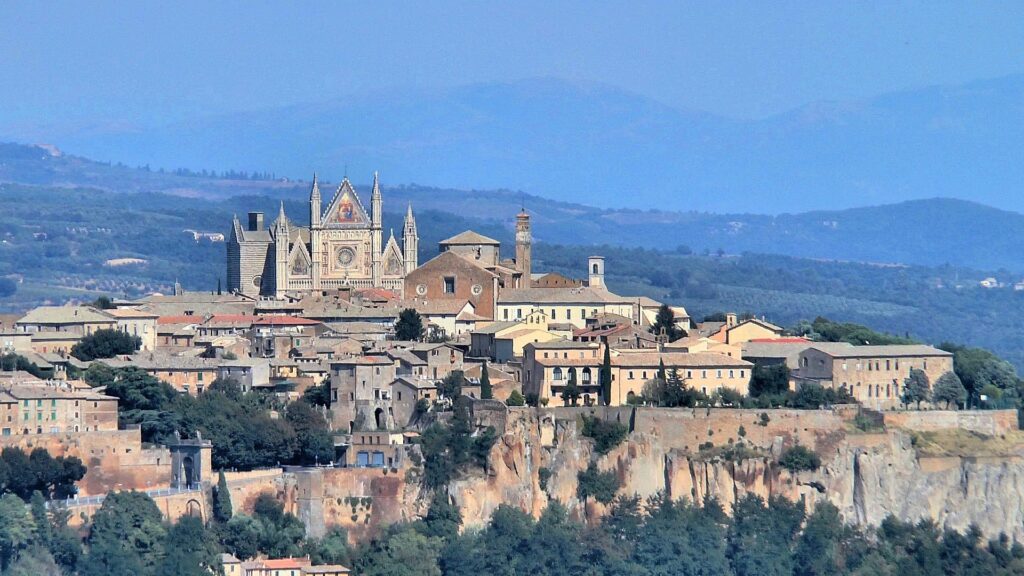Orvieto situated on the flat summit of a large butte of volcanic tuff, populated since Etruscan times was annexed by Rome in the third century BC. Because of its site on a high, steep bluff of tuff, a volcanic rock, the city was virtually impregnable.During the sack of Rome in 1527 by the Holy Roman Emperor Charles V, Pope Clement VII took refuge at Orvieto. Fearing that in the event of siege by Charles’s troops the city’s water might prove insufficient, he commissioned a spectacular 62 meter deep well, the Pozzo di S. Patrizio or “Well of St. Patrick”. This Italian name, inspired by medieval legends that St. Patrick’s Purgatory in Ireland gave access down to Purgatory, was used to indicate something very deep. The construction was by the architect-engineer Antonio da Sangallo the Younger. The central well shaft was surrounded by ramps in a double helix, similar to Saladin’s Well. These ramps were each designed for one-way traffic, so that mules laden with water-jars might pass down and then up unobstructed. An inscription on the well boasts that QUOD NATURA MUNIMENTO INVIDERAT INDUSTRIA ADIECIT (“what nature stinted for provision, application has supplied”).

